Many of us feel overwhelmed just hearing the word “investing.” We may have heard that investing is incredibly complicated or risky. So we’re afraid of making a wrong decision and losing money.
But if you follow the right investing strategy, there’s no reason to feel overwhelmed or worried. In this book, Tony Robbins explains the simple rules for investing safely and profitably. This isn’t about gambling to get rich quick. This is about growing our wealth on a rock solid secure foundation, so we can have peace of mind for our families and our future retirement.
What’s the end goal? Getting our money to work for us, instead of us always needing to work for money. Tony Robbins also calls it “Making money your slave instead of being a slave to money.”
By the way, another super-popular personal finance book is called Rich Dad Poor Dad by Robert Kiyosaki. In that book, Kiyosaki shares his story of growing up with both a poor dad (his biological father) and a rich dad (his best friend’s father who was a successful local entrepreneur).
His Rich Dad taught him many important lessons about building wealth, but the most important one echoes the message of this book: “Rich dad explained this point of view over and over, which I call lesson number one: The poor and the middle class work for money. The rich have money work for them.”
If you want to learn the basics of how people become wealthy, then also go read our summary of Rich Dad Poor Dad by Robert Kiyosaki.
Who is Tony Robbins and why listen to him?
Tony Robbins (author website) is probably the #1 motivational speaker in the world. He packs stadiums of people to hear him speak, he’s a bestselling author, he’s coached big celebrities like Oprah Winfrey and let’s not even mention that private island he bought in Fiji.
All this is to say: If Tony Robbins isn’t successful, then I don’t know who is! But he didn’t start out that way. At 17 year old, his abusive mother kicked him out of the house, and he worked a ridiculous number of hours every day just to survive. Eventually, he found his calling as a coach and speaker.
He succeeded by studying other successful people like a detective. He was sure that if he could find the patterns of behavior that led to their success, then other people could copy those behaviors and become successful too. Today many people, including a few of my personal friends, credit Tony with changing the course of their lives.
So let’s jump into the first lesson of this Unshakeable summary…
📈 1. Choose Index Funds: They provide reliable long-term growth with low fees
Since this is a book for investing beginners, let’s quickly cover the basics.
First of all, what is a stock? It is a small part of a company that anyone can buy or sell. For example, if you wanted to then you could buy a small fraction of Disney by buying one of their stocks. Then if Disney grows more successful in the future, then your stock also becomes worth more money. This means you become wealthier because you can sell it for more money.
Usually people imagine investing as this type of “stock picking.” Like we need to carefully choose the right stocks to become rich. If we choose the wrong stocks, then we lose all our money. Well, this sounds risky, doesn’t it? Honestly, it IS risky! It’s like trying to predict the future! The truth is that it’s very difficult to guess which companies will be successful in the future. Even the so-called experts are wrong most of the time. Just ask Kodak or Blockbuster!
The good news is, Tony Robbins recommends a very different investing strategy. It’s the same simple strategy billionaires like Warren Buffett, Peter Lynch and Ray Dalio recommend to their family members. And it all centers on index funds.
An index fund is like a collection of ALL the stocks on the market. When you put money into an index fund, you’re not just picking one stock—you’re picking them all! That’s right, you’re putting an equal bit of money into EVERY bigger stock on the market.
For example, have you heard of the S&P 500? This is a list of the 500 biggest US companies including Amazon, Apple, Google, Walmart, McDonald’s, etc. Well, there are S&P index funds available that let you invest equally into all 500 of these company stocks at the same time.
Index funds are great because they make investing far more safe and predictable. Although individual stocks have always been risky and individual companies can always go out of business, the stock market as a whole has always gone up over the long term. This means if you invest in every company on the market, then you are almost guaranteed that your money will grow over time. (Yes there have also been many shorter-term market crashes and corrections, but we’ll talk about these in a few minutes.)
Trying to pick the right individual stocks is very risky, it’s like trying to predict the future! So Tony Robbins recommends we invest in index funds, which means putting an equal bit of money into every bigger stock on the market. This ensures our money will grow over the long term.
💰 2. Compound Your Wealth: Your savings will grow faster through the math of compound interest
How much could your money grow through index funds? Well, more than you might expect. Tony writes:
The S&P 500 returned an average of 10.28% a year from 1985 to 2015. […] Let’s say you’d invested $50,000 in 1985. How much would it have been worth by 2015?
The answer: $941,613.61. That’s right. Almost a million bucks!
This sounds surprising because we mostly hear the negative news about the stock market. We hear about the crashes that happen every few years and assume the stock market is a big roller coaster.
In reality, the stock market has grown about 10% per year on average for decades. (Which is about 7% after inflation is accounted for.) Yes, it is true there are some years when the markets crash, but in the long term those losses are more than offset by the growth during the good years.
The key is to see investing as a very long-term game. Put your money in for 10, 20, 30 years or longer. If there’s a recession, then you will appear to lose money for a few years. But if you stay calm, keep your money invested, then it WILL eventually recover and your wealth will grow by about 10% per year. The reason investing can pay off so much in the long term is because of something called compound interest.
Compound interest, what’s that?
We first have to explain what interest is. You see, when your money grows through investing, that growth is called “interest.” For example, if you invest $100 and it grows by 10%, then you now have 10 more dollars and we would say you “made 10% interest.”
Compound interest is when this growth continues the following years and multiplies itself. This means your past interest starts to generate its own interest.
To illustrate this, let’s go back to our last example. So you had $100, then over one year you made 10% interest and now you have $110. So what happens the second year? Well, if you made 10% interest again, then you would earn another $10 from your initial amount and another $1 from the $10 you earned the previous year. This extra dollar is the compound interest.
While the effect may sound small in this example, over decades it will make become a tremendous force. That’s why Tony Robbins said $50,000 invested in 1985 in the S&P 500 would have grown to almost one million dollars by 2015.
Interest is when your money grows from investing. Compound interest is when you earn interest not just from the money you saved, but also from past interest. This effect can make your money “compound” or grow a lot faster than you expect.
❌ 3. Avoid Mutual Funds: They perform worse and cost more than index funds
While we’ve been talking about the benefits of index funds and compound interest, most people put their savings into something called mutual funds.
Mutual funds are also a collection of stocks, but a fund manager picks which individual stocks go into it. Now, in a perfect world, having a professional pick stocks for us sounds like a great idea. However, research shows that mutual funds simply don’t perform as advertised. They usually grow our money slower than index funds, especially when the higher fees are taken into account. Tony writes:
One of the most shocking studies I’ve seen on this topic of mutual fund performance was by an industry expert named Robert Arnott, the founder of Research Affiliates. He studied all 203 actively managed mutual funds with at least $100 million in assets, tracking their returns for the 15 years from 1984 through 1998. And you know what he found? Only 8 of these 203 funds actually beat the S&P 500 index. That’s less than 4%!
This means 96% of the most successful mutual funds failed to beat a simple index fund that can be managed automatically by a computer. (Despite the mutual funds being run by very highly paid professional investors.) And remember that just because a mutual fund has done well in the past, that doesn’t mean it will continue to perform well in the future. In this book, Tony repeated the mantra many times that, “Today’s winners are often tomorrow’s losers.”
Finally, let’s keep in mind financial advisers who work at banks and investment places are often incentivized to sell mutual funds. They can often make a lot more money selling these funds instead of mentioning index funds, because mutual funds make a lot of money for their company! This doesn’t exactly sound like unbiased advice…
Mutual funds are collections of stocks picked by professional fund managers. In theory, they should grow our savings faster, but studies show 96% of mutual funds have performed worse than simple index funds in the past.
🏦 4. Avoid Fees: They eat up a significant part of retirement savings for many people
Typically, mutual funds have fees of 2% or more. At first, this doesn’t sound like much, but it will cost you a large part of your wealth over a lifetime. When you consider the average yearly growth after inflation may be around 7%, then 2% in fees means you’re paying one-third of your retirement savings just in fees! When Tony talked to investing legend Jack Bogle (Wikipedia), he heard the negative impact of these fees explained clearly:
“Let’s assume the stock market gives a 7% return over 50 years,” At that rate, because of the power of compounding, “each dollar goes up to 30 dollars.”
But the average fund charges you about 2% per year in costs, which drops your average annual return to 5%. At that rate, “you get 10 dollars. So 10 dollars versus 30 dollars. You put up 100% of the capital, you took 100% of the risk, and you got 33% of the return!”
Index funds have far lower fees, usually less than 0.5%. Why are they so much cheaper?
- They’re mostly automated. A team of highly paid bank managers are not needed to pick stocks, it can often be managed automatically through a computer.
- They often don’t give sales commissions. The low fees of index funds aren’t very profitable for banks, so financial advisers can’t make big commissions.
- They have lower trading fees. Every time a mutual fund buys or sells a stock, they pay a trading fee. These costs add up. On the other hand, index funds buy and hold the same stocks for years at a time, so there are far fewer trading fees.
More and more people are catching on to the benefits of index funds over the currently dominant mutual funds. According to the Wall Street Journal, people shifted over $400 billion into index funds in 2016, which was a new record. And I’m sure this trend will continue.
Another great personal finance book is Millionaire Teacher by Andrew Hallam. He also enthusiastically promoted the benefits of index funds. One of the most useful parts of his books explains the common sales arguments for mutual funds you will hear from bank employees and financial advisors. The big lesson is that you should be prepared and expect resistance from them if you mention index funds. Learn more in-depth investing tips in our summary of Millionaire Teacher by Andrew Hallam.
Mutual funds have fees of 2% or more. It doesn’t sound like much, but can cost you hundreds of thousands of dollars in potential retirement savings over a lifetime. Index funds usually have fees under 0.5% because they are mostly automated.
🧘 5. Remain Calm: Market falls are normal and predictable
When any market falls by at least 10% from its peak, it’s called a correction—a peculiarly bland and neutral term for an experience that most people relish about as much as dental surgery! When a market falls by at least 20% from its peak, it’s called a bear market.
When fear takes over, people make their worst investing decisions. When we’re scared, we can make decisions that totally derail our long-term investing success. It’s easy to imagine that we will stay calm during the next market correction or crash. But when you wake up one morning and see you’ve lost 20% of your life savings overnight, then it’s hard not to feel worried and anxious.
The worst part is that if you looked at the news during one of these temporary market falls, then you’ll always see the talking heads moaning about how this is the end. It happens every time. To be fair, that’s their job! They must scare people enough so their eyes stay glued permanently on the news. Then they sell our attention to advertisers so they can pay their mortgage. That is literally their business model.
The best way to remain calm, rational and unshakeable during those market downturns is to learn history. We must learn that market corrections and crashes are a normal, predictable and inevitable part of investing. It’s not a question of IF a downturn will happen in the future, but a question of WHEN.
Here are some facts:
- Market corrections (a 10% fall) have occurred once a year on average since 1900.
- About 1/5 of market corrections turn into a bear market (a 20% fall). Bear markets happen every 3-5 years on average.
This means the next time the market goes down, it is no reason to change your investing strategy. Because the market has always bounced back after every correction, bear market and recession. There is no reason to believe it will be different in the future.
Possibly the biggest mistake beginner investors make is to sell their investments while they are going down. Fear takes over and they panic. Remember the big financial crisis of 2008? (Investopedia) Huge institutions were going bankrupt, billions of dollars were being printed for bailouts, people were losing their homes across the country. The stock market took a nosedive—it lost about 50% of its value from October 2007 to March 2009.
But look at what happened next. Starting in March 2009, the economy bounced back. Over the next 7 year, the stock market more than tripled in value, restoring all the wealth that had been lost and then shooting to new peaks.
This means the worst move someone could have made during the crisis was to sell their investments! That would have locked in those losses permanently. A good move would have been to stay invested. The best move would have been to buy as many stocks as possible DURING the crash! And that’s exactly what the richest investors do. While the talking heads on the news are getting hysterical, intelligent investors are buying more than ever while stock prices are cheap. A simple quote that Warren Buffet made around 2009 sums it up perfectly:
A simple rule dictates my buying: be fearful when others are greedy, and be greedy when others are fearful. And most certainly, fear is now widespread.
—Warren Buffet
A market correction is when stocks fall by 10%. They have happened once a year on average since 1900. A bear market is when stocks fall by 20% or more. These happen every 3-5 years on average. These market falls are normal and predictable so remain calm and stay invested.
📊 6. Diversify: This helps you avoid losing money while investing
Diversification is having your money invested in many different types of assets. This can help you avoid losing money because when one type of investment is doing poorly, you still have your other types of investments which can be doing well. In plain english, this is “not putting all your eggs in one basket.”
For example, you shouldn’t put all your savings in US stocks even if you believe it will grow faster than any other investments. If the US stock market goes down, then you will be in a very bad position for a few years. Instead, you should spread your savings across the US stock market, international stock markets, government bonds, real estate and more.
Most people believe top investors are obsessed with making money. After talking to many millionaires and billionaire, Tony Robbins says this is not true. He discovered the best investors are obsessed with NOT losing money. Warren Buffett even has a famous line that goes:
Rule number one: never lose money. Rule number two: never forget rule number one.
—Warren Buffet
Here are a few good ways we can diversify:
- Use index funds. They help us avoid betting our money on one company. Instead, we’re spreading our money across the entire stock market.
- Use many types of investments. Like a variety of stocks, bonds, real estate, etc. The billionaire Ray Dalio warned Tony, “It’s almost certain that whatever asset class you’re going to put your money in, there will come a day when you will lose 50%–70%.”
- Spread your money across many countries and economies. You never know when one country’s growth will stall. For example, in the 1980s the Japanese stock market looked unstoppable, then it suddenly fell and hasn’t really recovered for 30 years. During most of the 2000s the US stock market grew by just 1.4% per year, which some call “the lost decade.”
- Buy investments over time. Nobody really knows when the cheapest time to buy an investment is. However, if you purchase your investments over time, then you can avoid spending all your money at the most expensive time. (This is also called dollar cost averaging.)
Diversification is spreading your money over many types of investments, like different countries, different stock markets, bonds, real estate, etc. With this strategy, your wealth can keep growing even when one part of the economy stops.
🎁 7. Beyond Finances: Achieve true emotional wealth through growth, giving and gratitude
At the end of this book, Tony Robbins shifts the focus away from finances. He is a very rich man and he knows many other rich and famous people. And Tony says most people who get wealthy don’t feel different inside like they had expected. In fact, many of the wealthiest people in the world live in fear they could lose everything. Is that the kind of wealth most of us imagine achieving? Probably not. Tony says:
What we really want are the emotions we associate with money: for example, the sense of freedom, security, or comfort we believe money will give us, or the joy that comes from sharing our wealth.
To achieve that kind of wealth, we must focus on growth, giving and gratitude:
1. Growth
First, we must keep growing. To avoid feeling miserable and unfulfilled, we must be moving ahead towards our desired visions of the future. (Considering you’re on growthsummary.com, I think you are doing well here!)
Phil Knight is the founder of Nike, the most successful sports clothing company in the world. Although Phil is a billionaire today, he says the most meaningful times of his life were the early days. The times when he was struggling to grow his company and selling shoes from the trunk of his car. Phil often says, “Life is growth. You grow or you die.” Read his inspirational story of entrepreneurship with our summary of his autobiography Shoe Dog by Phil Knight.
2. Giving
Second, we have to give and share. Giving our time, our attention and our resources to others is what makes most of us feel the most meaning in life. Modern society makes us more focused on consuming than giving, which can make life feel hollow and empty.
3. Gratitude
Rarely do we stop to enjoy all the good things in life. We take them for granted. We obsess over our current problems and what we lack. However, when we can slow down and feel grateful for what we do have—shelter, a friend, a lover, a family member, safety, art, music, nature—then we have the power to put ourselves into a beautiful state.
When Tony Robbins feels himself slipping into a suffering state, this is what he does. First he breathes and slows down, which creates some distance between him and the thoughts pulling him into suffering. Then he redirects his focus to gratitude and appreciation.
To overcome fear, the best thing is to be overwhelmingly grateful.
—Sir John Templeton
People don’t really want money, but the feelings they believe money can bring them security, significance and freedom. Yet many people become rich and still live in fear of losing it all. So we must focus on emotional wealth which is attainable through growth, giving and gratitude.
Conclusion
Hope you’ve learned some great tips for investing. My favourite part of this book was the focus on extinguishing fear through learning about the historical patterns of the stock market. What about you?
And if you like Tony Robbins, then I think you’ll also enjoy the classic book Think and Grow Rich. The author Napoleon Hill wanted to find out what made them successful, driven and motivated. So he interviewed over 500 millionaires including big names like Henry Ford and Thomas Edison.
In the end, he discovered wisdom that was simple yet timeless: Have a burning desire for what you want, follow a definite plan and have faith your plan will succeed. If you need to get your inner fire burning bright again, it’s a good place to start. Read our summary of Think and Grow Rich by Napoleon Hill.

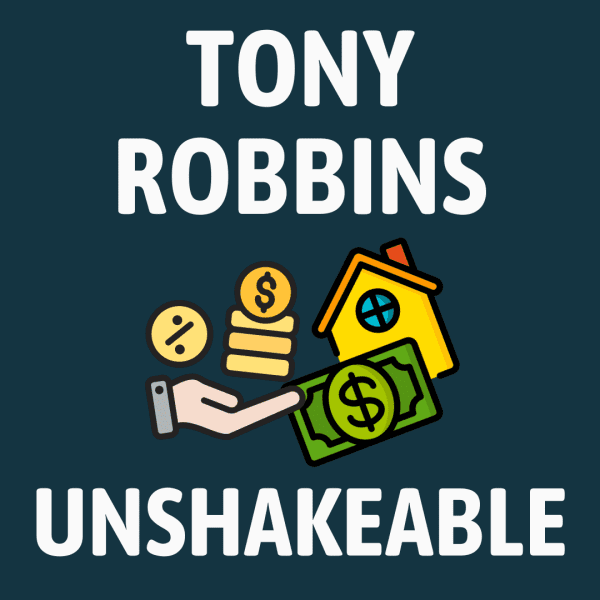


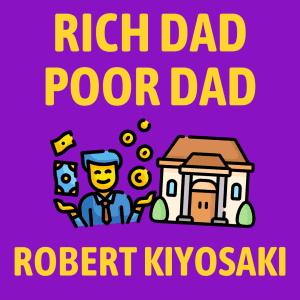
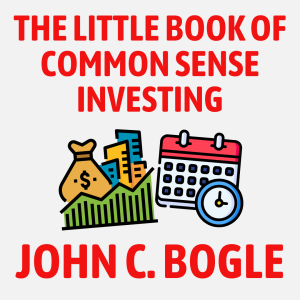





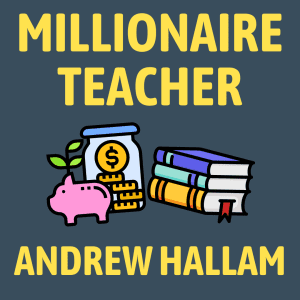
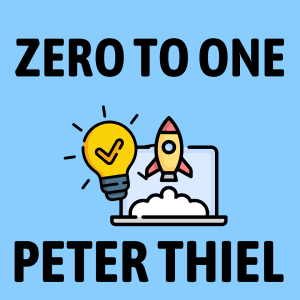

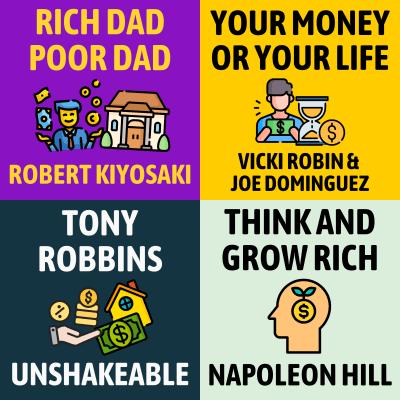











Community Notes